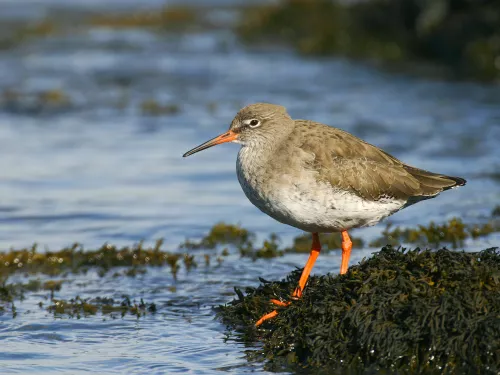Red-necked grebe
Red-necked grebes occasionally attempt to nest in the UK, but they're more often seen as winter visitors to sheltered coasts.
Red-necked grebes occasionally attempt to nest in the UK, but they're more often seen as winter visitors to sheltered coasts.
Living up to its name, the red-tailed bumblebee is black with a big, red 'tail'.
Also known as the two-coloured mason bee, this beautiful bee is famous for nesting in old snail shells.
The red-throated diver lives up to its name - the distinctive red patch on its throat heralds the breeding season. In summer, it nests in Scotland, but look out for it around the UK's coast during winter.
A very rare species, this moth is now limited to one site in the UK. Males can be a striking reddish buff in colour.

The redshank lives up to its name as it sports distinctive long, bright red legs! It feeds and breeds on marshes, mudflats, mires and saltmarshes. Look out for it posing on a fence post or rock.
A summer visitor to the UK, the red-tailed redstart is a robin-sized bird that can be spotted in woodlands, parks and hedgerows, mainly in the north and west of the UK.
The redwing is a winter visitor, enjoying the feast of seasonal berries the UK's hedgerows, gardens and parks have to offer. Look out for the distinctive orangey-red patches under its wings.
A streaky brown bird, the reed bunting can be found in wetlands, reedbeds and on farmland across the UK. Males sport black heads and a white 'moustache'.
Reed sweet-grass is a towering grass with large, loose flower heads that can be found on marshy ground near rivers, streams and ponds. It can become invasive, but does shelter various aquatic creatures.
Listen out for the 'chattering' song of the reed warbler, while wandering the UK's lowland wetlands in summer. A small, brown bird, they are quite hard to see.
The rhinoceros beetle lives up to its name by sporting a distinctive 'horn' on the males' head. This glossy, blue-black beetle can be found in woods, parks and hedgerows, and depends on dead wood.